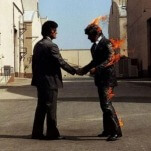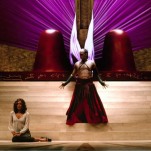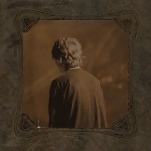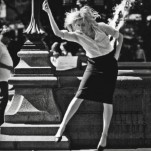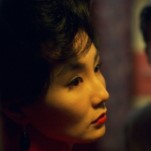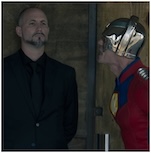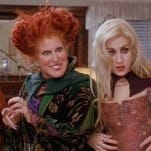Woman With a Blue Pencil by Gordon McAlpine

Hard-boiled detective fiction needs more writers like Gordon McAlpine. In his last two novels, the Maltese Falcon-deconstructing Hammett Unwritten and the just-released, parallel-narrative marvel Woman With a Blue Pencil, McAlpine has delivered the goods on multiple levels. In each case, he’s pulled off feats of masterly metafiction while sacrificing little—if any—page-turning punch.
 In Hammett Unwritten, McAlpine turned The Maltese Falcon inside out, transporting its characters out of the pages of Dashiell Hammett’s legendary crime novel and into Hammett’s life, hungry for revenge against the beleaguered author himself. In the process, McAlpine constructed an appropriately hard-boiled explanation for the great mystery of Hammett’s career-ending writer’s block, which consumed the last three decades of his life.
In Hammett Unwritten, McAlpine turned The Maltese Falcon inside out, transporting its characters out of the pages of Dashiell Hammett’s legendary crime novel and into Hammett’s life, hungry for revenge against the beleaguered author himself. In the process, McAlpine constructed an appropriately hard-boiled explanation for the great mystery of Hammett’s career-ending writer’s block, which consumed the last three decades of his life.
Woman With a Blue Pencil starts in a similar place, with Japanese-American academic and aspiring gumshoe Sam Sumida in a Los Angeles cinema on December 6, 1941, watching Humphrey Bogart manhandle Peter Lorre in The Maltese Falcon film. When the projector breaks and the screen goes blank, Sumida’s story—and McAlpine’s novel—veers off into fascinating and unexpected territory.
McAlpine introduces Sumida as a character in the first chapter of a book titled The Revised by Takumi Sato. Sato is a second-generation (Nisei) Japanese-American would-be novelist whose manuscript for a book with a Nisei protagonist (Sumida) has been rejected by a publisher following the attack on Pearl Harbor. The rest of Woman With a Blue Pencil is divided into three parallel narrative components: letters from Sato’s editor at Metropolitan Modern Mysteries (the titular woman with the blue pencil), further excerpts from The Revised and excerpts from The Orchid and the Secret Agent, a Sato-authored “pulp spy thriller” published under the name William Thorne.
Without giving too much away about McAlpine’s fractured, fast-flowing narrative, we learn that Sato, upon the rejection of his novel (due to the impossibility of publishing a novel with a Japanese hero following the attack on Pearl Harbor), quickly rebounded with The Orchid and the Secret Agent, featuring a staunchly patriotic Korean-American hero and unspeakably evil Japanese villains.
-

-

-

-

-

-

-

-

-

-

-

-

-

-

-

-

-

-

-

-

-

-

-

-

-

-

-

-

-

-

-

-

-

-

-

-

-

-

-

-









